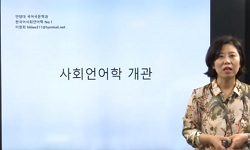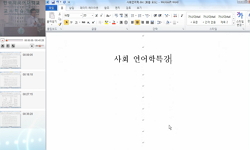리듬은 음악 구성의 가장 강력하고 근본적인 요소 중의 하나로서 좋은 리듬의 개발은 음악적 발전에 매우 중요한 부분을 차지하므로, 이를 위해 몸 전체를 사용하여 음악을 느끼고 표현하며...
http://chineseinput.net/에서 pinyin(병음)방식으로 중국어를 변환할 수 있습니다.
변환된 중국어를 복사하여 사용하시면 됩니다.
- 中文 을 입력하시려면 zhongwen을 입력하시고 space를누르시면됩니다.
- 北京 을 입력하시려면 beijing을 입력하시고 space를 누르시면 됩니다.
R. Abramson의 Eurhythmics 지도법을 적용한 W.A. Mozart K 265 C장조 피아노 지도방안 고찰 = A Study on a Piano Teaching Method for C Major K 265 by W.A. Mozart Based on the R. Abramson`s Eurhythmics Teaching Method
한글로보기https://www.riss.kr/link?id=A82448537
- 저자
- 발행기관
- 학술지명
- 권호사항
-
발행연도
2010
-
작성언어
Korean
- 주제어
-
KDC
374.6705
-
자료형태
학술저널
-
수록면
111-139(29쪽)
- 제공처
-
0
상세조회 -
0
다운로드
부가정보
국문 초록 (Abstract)
리듬은 음악 구성의 가장 강력하고 근본적인 요소 중의 하나로서 좋은 리듬의 개발은 음악적 발전에 매우 중요한 부분을 차지하므로, 이를 위해 몸 전체를 사용하여 음악을 느끼고 표현하며 음악적 기초를 튼튼히 하고 음악성 및 창의력, 표현력 개발에 유익한 전인적 음악교육이 필요하다고 보았다. 음악교육과 악기교육이 분명히 다름에도 불구하고, 우리나라에서 행해지고 있는 음악교육이라 함은 피아노교육과 동일시 하는 경향으로 인하여, 시작과 동시에 피아노에 앉아 악보와 함께하는 기존의 피아노 교육에서 보완점을 찾고자 전인적 음악교육인 유리드믹스 지도법을 활용한 피아노 지도 방안을 제시하였다. 아브람슨이 유리드믹스 수업 중에 "피아노를 잘 연주하려면 피아노를 떠나라"라고 한 그의 말이 피아노를 지도하는 교사나 배우는 학생들에게 시사하는 바에 따라, 지도교사의 경험에 의존하였던 일방적인 피아노 교수법에서 나아가, 음악교육의 바탕 위에 연주를 위한 기술과 기교 등 연주능력을 향상시키기 위하여 신체적 리듬 감각을 훈련함으로써 인간의 감정을 자유롭게 표현하고, 신체 운동과 리듬을 결합시켜 스스로 음악을 경험하고 리듬을 감지할 수 있는 능력을 길러내어 음악의 즐거움을 느낄 수 있는 가치 있는 긍정적 경험 즉, `들리는 소리`를 `보이는 소리`로 나타내는 교육으로의 방향전환을 위해 모차르트의 피아노 변주곡 K 265 C장조 곡을 선정하여 그 구체적인 지도 활용을 제안하였다. 변주곡의 여러 변주 요소 중 리듬요소의 변화를 위주로 하여 각 변주마다 신체적 움직임과 음악과의 연결을 통한 유리드믹스 지도법을 소개하였고, 곡 전체의 흐름 또한 파악하여 피아노 연주 지도에도 활용하도록 하였다.
다국어 초록 (Multilingual Abstract)
Rhythm has taken an essential role as one of the most powerful and fundamental parts in the progress of music. In order to learn this rhythm, a profitable musical education is needed: the whole-person education which brings the development of musicali...
Rhythm has taken an essential role as one of the most powerful and fundamental parts in the progress of music. In order to learn this rhythm, a profitable musical education is needed: the whole-person education which brings the development of musicality, creativity and expressiveness as well as musical fundamental is demanded. In spite of the difference between musical education and musical instrumental education, musical education in Korea starts with the beginning of a piano lesson. At the beginning of musical education in Korea, a student should be taught to read music sitting at the piano. That is, learning music is not enjoying music but reading music. In order to compensate this defect, Eurhythmics Teaching Method as a whole-person education has suggested a new way of teaching how to play the piano. Dr. Abramson said "If you want to play the piano terrifically, leave the piano" His comment had great implications for teachers and students who are closely associated with musical education. Based on his comment, we should go one step forward from the unilateral piano teaching method in musical education which has been totally relied on the experience of teachers. Eurhythmics Teaching Method is a good solution to it. This method involves training of rhythmical and physical sense, expressing human feeling and enhancing the musical appreciative power. It also changes the existing concept of music as a passive and audible sound into a new concept of music as a positive and visible sound. In this study, one of Mozart`s piano variations, K 265 is selected to suggest a teaching plan. Among numerous musical factors in variations, the rhythmical factor is mainly based in this teaching method. And rhythm-based musical appreciations and physical movements are applied to the teaching method about how to play the piano.
동일학술지(권/호) 다른 논문
-
달크로즈의 이론을 적용한 음악 개념 이해도 향상 프로그램 개발
- 한국달크로즈유리드믹스학회
- 하나영 ( Na Young Ha )
- 2010
-
달크로즈 유리드믹스 원리에 근거한 리듬 학습: 호두까기인형을 중심으로
- 한국달크로즈유리드믹스학회
- 국혜림 ( Hye Lim Kook )
- 2010
-
유아 음악교육 실태 및 부모의 인식: 대전시를 중심으로
- 한국달크로즈유리드믹스학회
- 안미영 ( Mi Young Ahn )
- 2010
-
Dalcroze Eurhythmics 지도법이 유아의 타악기 연주능력에 미치는 영향: 만3-4세 유아를 중심으로
- 한국달크로즈유리드믹스학회
- 오재풍 ( Jae Pung Oh )
- 2010




 KISS
KISS






